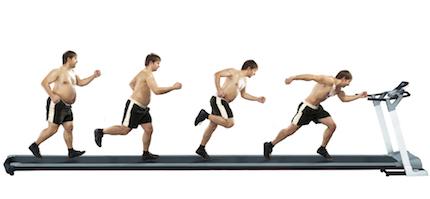Elite Physique


The Ins and Outs of Cardio
Cardio—how much should I do? When do I do it? What type should I do? Let’s discuss four cardinal rules of what Prime Nutrition owner Aaron Singerman calls the Cardio Confessional.
Assigning every client a blanket cardio program is too cookie cutter for me. Some need it. Some don’t. And some really need it. When we first start dieting clients, I do typically assign 20 to 30 minutes of steady-stage cardio for those who need to lose a good amount of fat. This schedule is tweaked based on client feedback. Are they losing too quickly? If so, I may cut back the cardio. I may even cut it out completely. Each client is different and requires a unique approach. When I did the 2005 OPA Provincial Championships, I did zero cardio. None. Nada. Zero cardio and a class win … not too shabby. Contrast that to my next show, the CBBF Nationals. I killed myself with twice-a-day cardio sessions, and I looked bad. Not a cut on my body and the muscle loss was clearly evident. That wasn’t a good day or a good prep.
Confessional Rule 1: Not every prep is the same
The cardio schedule you did for the last show could be completely different than what you do for your next show. It’s a learning experience, and that’s something I love about competitive bodybuilding (but it’s one fact most newbies can’t wrap their heads around).
Cardio Confession Rule 2: Just do it
Should you do fasted cardio? Or do it after the workout? I like to do my cardio after weight training. Why? I’m already at the gym, so I don’t have to make a second trip. My heart rate is already elevated, which you’d normally have to do in the first 10 minutes of cold cardio. It’s just more convenient for me. So do your cardio when it’s most convenient for you. I’d rather a client do cardio anytime during the day than not do it at all.
Cardio Confessional Rule 3: Don’t kill yourself with cardio
I could never understand why people do Palumbo-style diets. Sure, they work (for most) but who has three hours of free time to devote to cardio? Rather than manipulate the diet, this type of contest prep routine bumps up the cardio when body fat loss stalls out. It’s common to hear of ketogenic dieters doing two to three hours of cardio. If I wanted to sit on a bike for that long, I would’ve signed up for the Tour de France. When we monitor our clients, we prefer to manipulate the diet and make small changes (sometimes as many as 20+ changes), not kill our clients with cardio. And if you’re an athlete with weak legs, two hours of cardio will kill your off-season leg gains. Guaranteed!
Cardio Confessional Rule 4: HIIT isn’t better than steady state—necessarily
I know what the internet wannabe gurus promote. They all swear by HIIT, citing a study they read about in a Layne Norton blog post. But the decision to employ HIIT or steady-state cardio isn’t black and white. It doesn’t distill down into what the studies reveal. There’s more to the science of burning body fat. It’s actually an art. HIIT cardio is like HIT training. It works for some but not for everyone. If you don’t have much muscle to keep the metabolism revving in high gear, HIIT may be a good option for you. So bikini competitors and less muscled men’s physique athletes may want to try HIIT. However, if you’re a 250-pound bodybuilder, I believe steady-state cardio is better. Ever see a top-tier IFBB pro bodybuilder killing it on a Wingate HIIT routine? Never. Their metabolisms are already in overdrive due to their sheer muscle. Here’s another factor: You wouldn’t believe how many natural athletes and slightly muscled athletes believe they can do it all. They want to prep for a show, play basketball during the week, and hit the rink for a pickup game or two on the weekend. This mentality has really led to the upswing in HIIT cardio selection. The feeling of working hard and of accomplishment drives the athlete to focus on HIIT. Hey, if it makes you sweat profusely and breathe like your lungs are on fire, it has to be effective.
What’s the take-home message? Cardio selection isn’t a cookie-cutter approach. Everyone’s prep progress is different, and cardio must be custom-tailored to the individual. In fact, the entire prep phase is fluid and ever-changing. We make changes to clients’ programs based on feedback, not a calendar date. If you’re struggling with what approach works best for you, give us a shout; we’d love to help you get ready for your next show!

